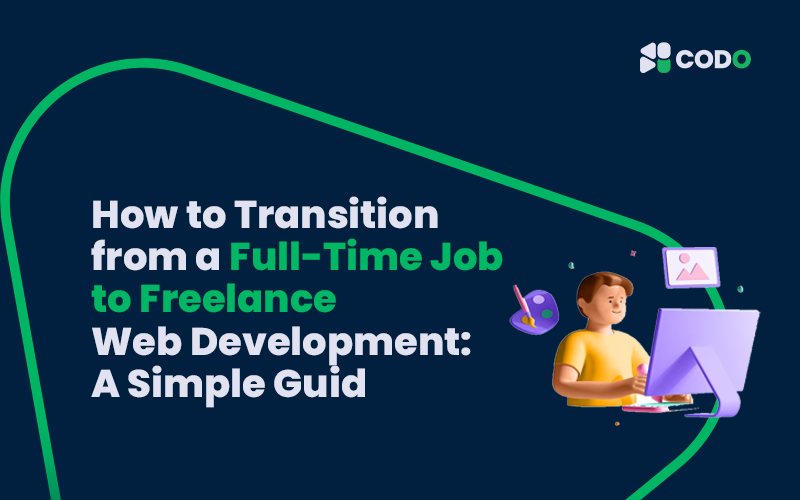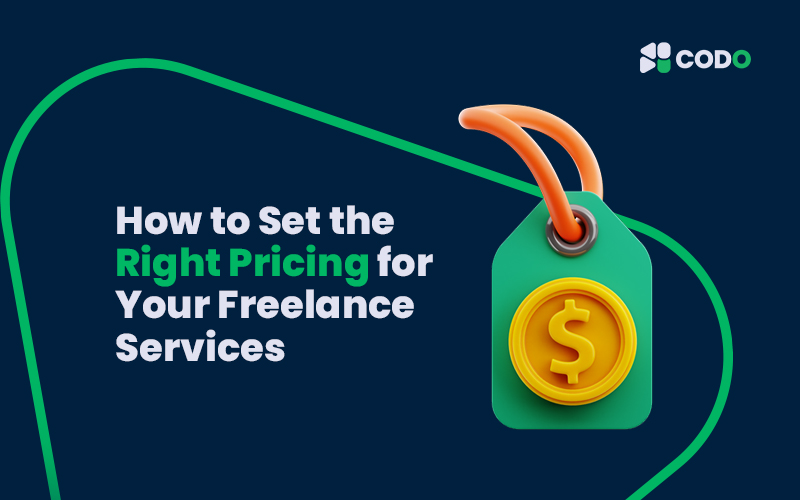The Relevance of Digital Skills in Today's World
Wed, 05 Feb 2025

Follow the stories of academics and their research expeditions

This decision of switching from a full-time job to freelance web development is both exciting and rewarding but requires planning and the right approach. Freelancing gives flexibility, autonomy, and a variety of diverse projects to work on, but with its own challenges. Here's a step-by-step guide on how to transition into this new career of freelance web development.
1. Assess Your Web Development Skills
Before jumping into freelancing, it's crucial to assess your web development skills. Ensure you're comfortable with the tools and technologies required to build functional websites. Whether you’re just starting or looking to refine your skills, it’s important to have a solid foundation.
CODO Academy’s web development course is an excellent option to help you get up to speed. Known as one of the best web development courses in Malappuram, this course provides comprehensive training in essential web development tools and strategies, ensuring you're prepared to take on real-world projects.
2. Build an Impressive Portfolio
A strong portfolio is one of the most important assets you’ll need to attract freelance clients. Start by creating a personal website or a few projects to showcase your skills. If you don't have client work yet, you can still build a portfolio by working on mock projects or offering your services at a discounted rate to local businesses or non-profits.
Here are some tips to build your portfolio:
Showcase personal projects: Build websites for personal use or create mock websites to demonstrate your abilities.
Volunteer your services: Help local businesses or charities with their websites to gain experience and grow your portfolio.
Set up an online portfolio: Use platforms like GitHub or your own website to showcase your work.
A strong portfolio will help you demonstrate your expertise to potential clients and stand out in a competitive freelance market.
3. Set Realistic Freelance Rates
The rate of charging is one of the most difficult tasks for a web developer, especially for a new one. The competitive rate should be set while keeping in mind the experience level and market rate.
Some tips to set your freelance rates:
Research the market: Look at what other web developers in your area and online are charging for similar services.
Start small: In the beginning, you may need to offer lower rates to attract clients and build your reputation.
Increase rates over time: As you gain experience and positive feedback from clients, gradually raise your rates.
With the skills you gain from CODO Academy’s web development course, you’ll be equipped to set competitive rates that reflect the quality of your work.
4. Find Your First Clients
Getting your first client can feel challenging, but there are multiple ways to find freelance web development opportunities:
Freelance platforms: Sign up on websites like Upwork, Fiverr, or Freelancer. These platforms connect freelancers with clients looking for web development services.
Networking: Reach out to your professional and personal network. Let people know you’re offering web development services.
Local businesses: Many small businesses need websites but can’t afford large agencies. Reach out to local businesses and offer affordable web development solutions.
Once you’ve completed a few projects, you’ll start building a client base that will refer you to others.
5. Master Time Management
Freelancing offers flexibility, but it also means that you’re in charge of managing your own time. Effective time management is key to balancing multiple projects, meeting deadlines, and avoiding burnout.
Here are some tips for staying productive:
Set clear working hours: Establish a routine and stick to it to maintain a healthy work-life balance.
Use project management tools: Tools like Trello, Asana, or Todoist can help you stay organized and track progress on various projects.
Avoid distractions: Create a dedicated workspace and eliminate distractions to stay focused during working hours.
Being organized and disciplined with your time will help you deliver high-quality work on time and keep clients satisfied.
6. Commit to Continuous Learning
The world of web development is constantly evolving. To stay competitive and provide value to your clients, you need to keep learning and improving your skills. Stay updated with the latest tools, technologies, and best practices in the industry.
Take advanced courses: Continue building on your skills by enrolling in advanced courses or workshops.
Follow industry blogs and forums: Stay informed about the latest trends and developments in web development.
Experiment with new tools: Explore new web development tools and platforms to keep your services fresh and relevant.
Continuous learning will ensure that you stay at the forefront of the web development field and can offer your clients the most up-to-date solutions.
Key Points to Remember:
By following these steps and committing to continuous learning, you can successfully transition from a full-time job to a freelance web development career. With the knowledge and skills you’ll gain from CODO Academy’s web development course, you’ll be well on your way to building a successful freelance career.
Wed, 05 Feb 2025

Fri, 31 Jan 2025

Thu, 30 Jan 2025

Leave a comment